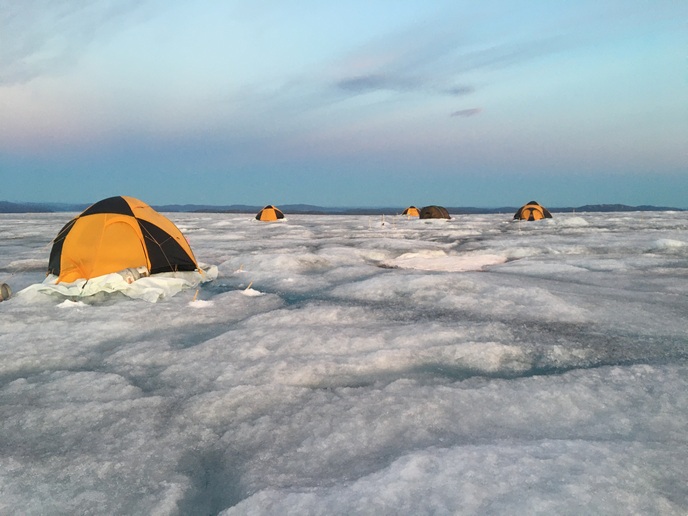Microbes’ response to climate change offers a glimpse into the future of the Arctic
The Arctic plays a pivotal role in balancing the world’s climate. Changes in this polar region will have ripple effects that can be felt in lower altitudes. The worrying news is that the permafrost contains roughly twice as much carbon(opens in new window) – as Earth's atmosphere. As the permafrost gets warmer, the microbes in the soil ‘wake up’ and contribute to processes that stimulate the release of carbon deposits as greenhouse gases – CO2 and methane. Funded by the Marie Skłodowska-Curie Actions programme, the MicroArctic(opens in new window) project was established to advance understanding of the ability of microbial communities to adapt to the fast-warming Arctic and their feedbacks with biogeochemical cycles. The programme trained 15 early-stage researchers in microbiology and biogeochemistry to be able to respond to the need for governance and leadership in public, policy and commercial interests in the region. Project researchers conducted several measurements of temporal and spatial variations of microbial communities in several Arctic habitats (soil, glaciers and air) and examined microbe interaction with the local climate. Furthermore, they performed stratigraphic analyses(opens in new window) of microbial community structures and functionalities on a molecular level and geochemical and mineralogical measurements in glacier forefield chronosequences and permafrost deposits. “Exploring the dynamics of individual populations and responses to climate change is critical to evaluating habitat plasticity and resilience to a warming climate. It also helps devise strategies that help reduce the damage to the high-biodiversity Arctic ecosystems,” notes Alexandre Anesio, MicroArctic’s coordinator.
Ancient soil microbes affect Arctic climate and unleash diseases
Global warming is accelerating the thawing of permafrost, causing large amounts of the potent greenhouse gas methane to be released into the atmosphere. Project researchers demonstrated that this direct methane release can occur from microbial communities (frozen organic matter) formed in permafrost thousands of years beforehand. As a result of global warming and thawing permafrost, scientists predict large releases of methane from these ancient microbes. Scientists also investigated potentially pathogenic bacteria isolated from diverse habitats in Spitsbergen, Norway. “Secreted by a variety of organisms, haemolysins (lipids and proteins) cause lysis of red blood cells by disrupting the cell membrane. They could largely contribute to determining viruses in animal models. Haemolysis was observed in 32 out of 78 bacterial species isolated from Arctic habitats,” adds Anesio. This project finding is reported here(opens in new window).
Microbial activity does not cease in winter
The beginning of the summer season is a critical period for stimulating higher microbial activity and nutrient cycling. MicroArctic identified ionic pulses of nutrients during the first melt of the summer season that boost algal blooms on the surface of the Greenland ice sheet(opens in new window). They also appear to be speeding up glacier melting, in a process not accounted for in current climate change models. Although biological processes slow down in winter, MicroArctic showed that microbes could remain active at temperatures much lower than previously thought. “Through laboratory simulations, we demonstrated that microbial activity and active biogeochemical processes can take place even during the dark and colder periods of the winter(opens in new window). This finding could enable microbe sampling operations to be conducted throughout the year and not only during the Arctic melt season,” explains Anesio. Species interactions and plasticity help Arctic microbes to adapt, survive and grow under harsh conditions. Increased knowledge about their biodiversity and interactions reinforces the need to protect the Arctic environment for the future generations.







